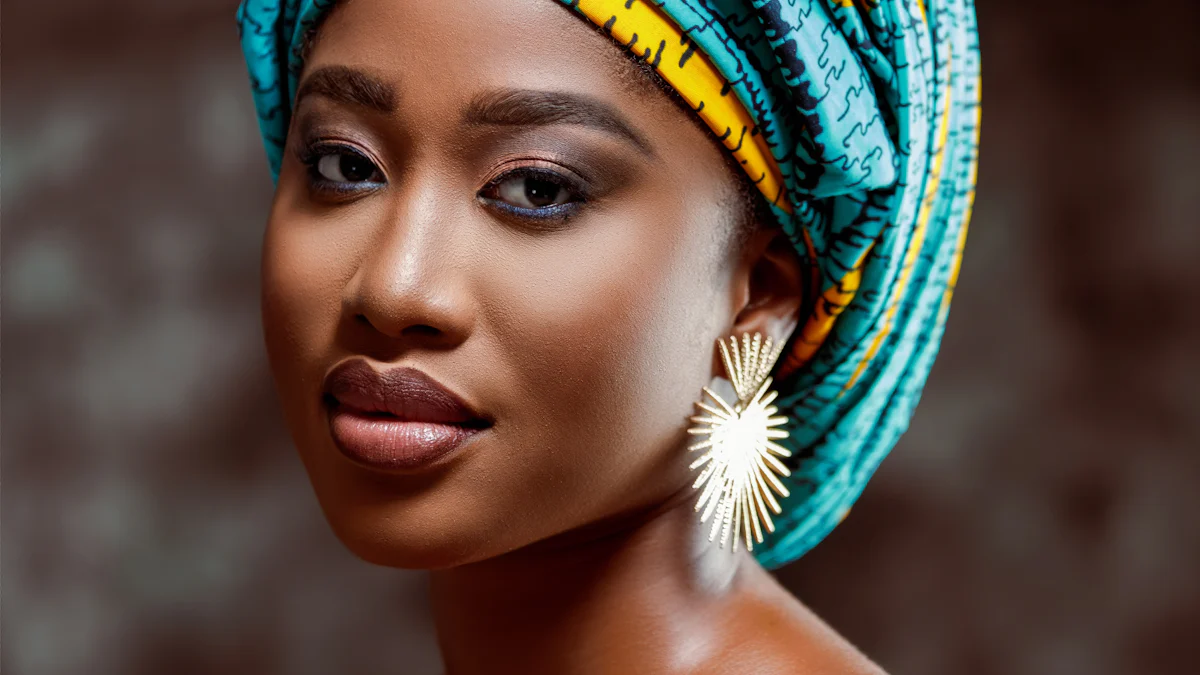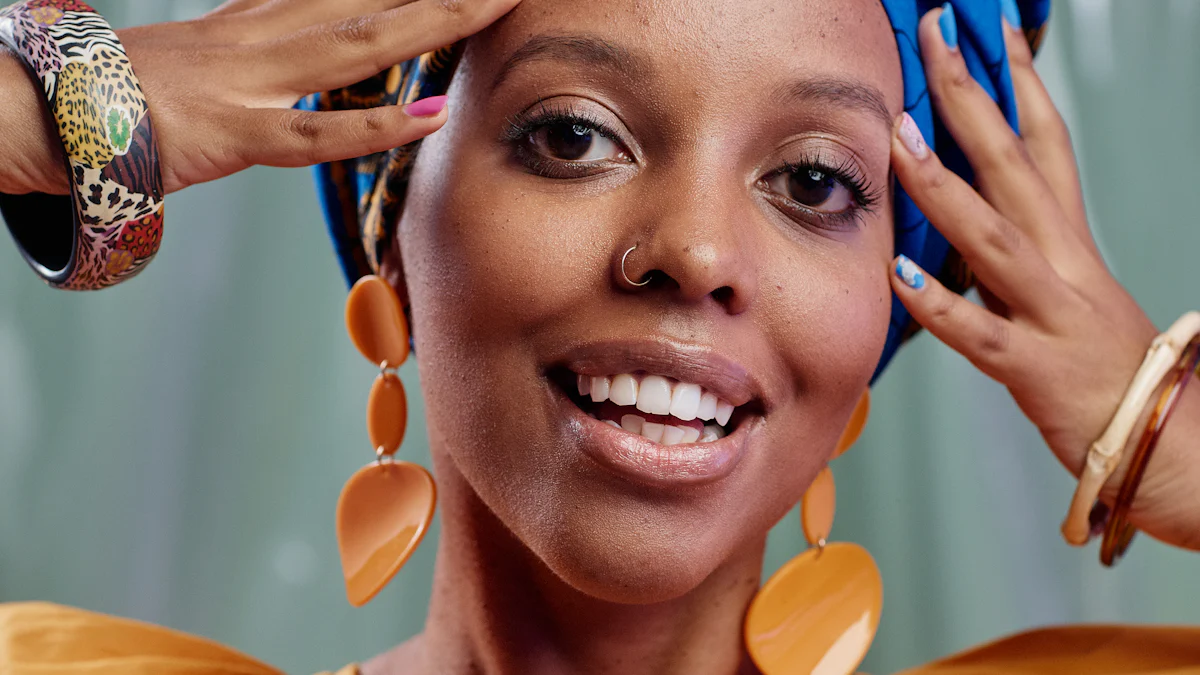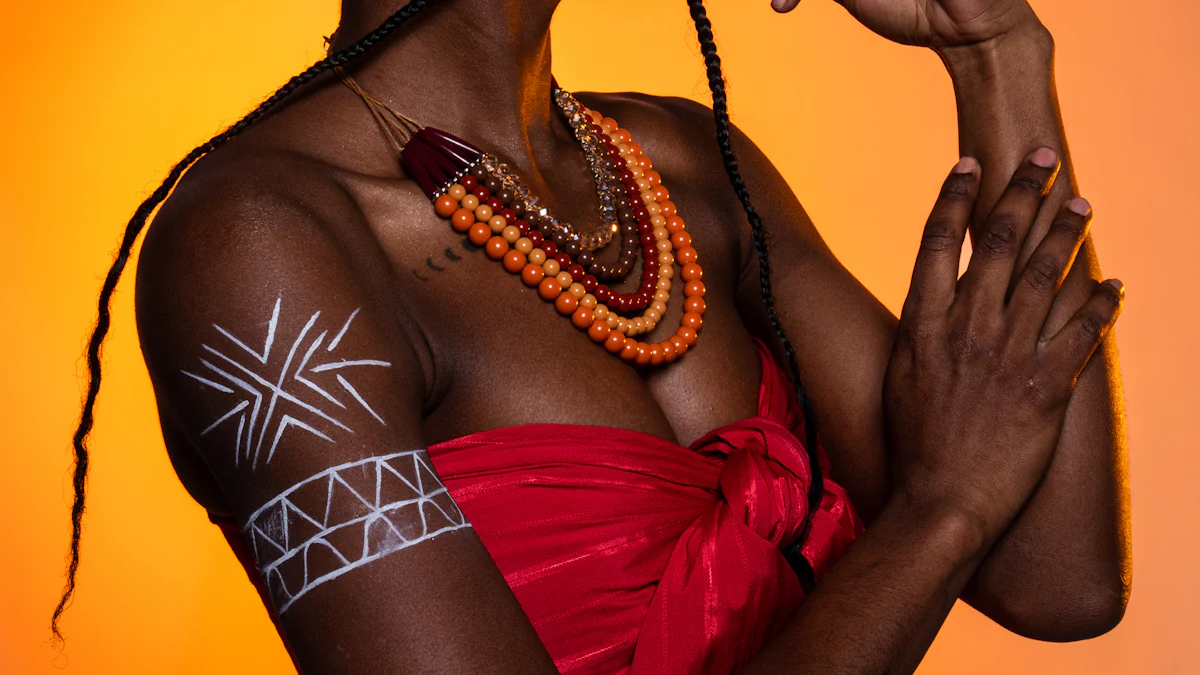
Head wraps have stood the test of time as a symbol of cultural pride and individuality. They carry deep meaning, connecting people to their heritage while offering a canvas for self-expression. Across the globe, head wraps reflect identity, whether through intricate designs in African traditions or their use in spiritual practices. Today, they blend tradition with modern fashion, becoming a versatile accessory. Unlike a simple headband, a head wrap tells a story, embodying empowerment and style. This timeless piece bridges the past and present, celebrating both roots and innovation.
Key Takeaways
- Head wraps are powerful symbols of cultural identity, connecting individuals to their heritage and traditions.
- Wearing a head wrap can serve as a form of personal expression, allowing individuals to showcase their unique style and creativity.
- Head wraps have historical significance, representing resilience and empowerment, particularly in African-American history.
- Incorporating head wraps into modern fashion blends tradition with contemporary aesthetics, making them versatile accessories for any occasion.
- Choosing sustainable and ethically produced head wraps supports local artisans and preserves cultural heritage.
- Head wraps offer practical benefits, such as protecting hair and providing comfort, while also enhancing personal style.
- Embracing head wraps fosters inclusivity and appreciation for diverse cultures, encouraging respect and understanding.
The Cultural Significance of Head Wraps

Historical and Traditional Roots
Head wraps have a rich history that spans continents and centuries. In African cultures, they hold profound meaning and serve as more than just a piece of fabric. For example, the Yoruba people of Nigeria call their intricately folded head wraps geles. These wraps are often worn during significant events like weddings or religious ceremonies, symbolizing elegance and cultural pride. Similarly, Ghanaian women refer to their head wraps as dukus, while in South Africa and Namibia, they are known as doeks. Each name reflects the unique traditions and identities of these regions.
Beyond Africa, head wraps also play an important role in other global traditions. In South Asia, women often wear head wraps or scarves as part of their daily attire, blending modesty with style. In the Middle East, head coverings like the hijab or turban carry religious and cultural significance. These practices demonstrate how head wraps transcend borders, connecting people through shared values of heritage and self-expression.
“The head wrap materially links Black women of the West with the traditions of their ancestors and with their cousins across the Atlantic.”
This quote highlights the enduring connection head wraps create between generations and across continents, preserving a sense of belonging and identity.
Symbols of Identity and Heritage
Head wraps often serve as powerful symbols of identity. In many cultures, they communicate social status, religion, or even marital status. For instance, in some African communities, the way a head wrap is styled can indicate whether a woman is married, widowed, or single. The colors and patterns of the fabric may also signify wealth, ethnicity, or spiritual beliefs. These subtle yet meaningful details make head wraps a unique form of non-verbal communication.
Preserving cultural heritage through head wrapping practices remains vital. Passed down through generations, the art of head wrapping teaches younger individuals about their roots and traditions. It fosters a sense of pride and continuity, ensuring that these customs endure in a rapidly changing world. By wearing a head wrap, individuals not only honor their ancestors but also celebrate their cultural identity in a visible and meaningful way.
Head Wraps as a Symbol of Empowerment
Resistance and Resilience
Head wraps have long symbolized strength and defiance in African-American history. During slavery, women used head wraps as a practical tool to protect their hair while working under harsh conditions. However, these wraps became more than just functional items. They transformed into symbols of resilience and cultural pride. Enslaved women wore them as a way to preserve their identity and maintain a connection to their African heritage, even in the face of oppression.
The Civil Rights Movement further elevated the significance of head wraps. Activists and leaders embraced them as a statement of empowerment and solidarity. By wearing head wraps, they rejected societal norms that sought to suppress their identity. Instead, they celebrated their roots and reclaimed their narrative. This act of resistance inspired many to view head wraps as a badge of honor, representing the fight for equality and justice.
“The head wrap is more than just a fashion statement; it symbolizes pride, tradition, and identity.”
— Historians or Cultural Experts
Today, head wraps continue to serve as a powerful reminder of the struggles and triumphs of African-American communities. They stand as a testament to the enduring spirit of those who came before us.
Personal and Spiritual Expression
Head wraps offer a unique way for individuals to express their identities. Each wrap tells a story, reflecting personal style, cultural background, or even mood. The choice of fabric, color, and design allows wearers to showcase their creativity and individuality. For many, wrapping their hair becomes an art form, a daily ritual that celebrates who they are.
Beyond personal expression, head wraps hold deep emotional and spiritual meaning. Some wear them as a form of self-care, finding comfort and confidence in the act of wrapping. Others see them as a connection to their ancestors, a way to honor traditions passed down through generations. The simple act of tying a head wrap can evoke a sense of grounding and belonging.
In spiritual practices, head wraps often symbolize modesty, respect, or devotion. They create a sacred space, allowing wearers to feel protected and centered. Whether worn for personal reasons or as part of a larger cultural or spiritual tradition, head wraps carry profound significance.
By embracing head wraps, individuals not only celebrate their uniqueness but also connect with something greater than themselves. These wraps become a bridge between the past and present, blending personal expression with cultural and spiritual depth.
The Evolution of Head Wraps in Fashion

From Cultural Tradition to Global Trend
Head wraps have traveled a fascinating journey from cultural symbols to global fashion staples. What once served as a marker of identity and tradition has now become a celebrated accessory in mainstream fashion. This transformation reflects the growing appreciation for the artistry and heritage behind head wraps. Designers worldwide have embraced these pieces, incorporating them into their collections to showcase the beauty and diversity of cultures like those in Africa. By doing so, they have brought head wraps into the spotlight, making them accessible to a broader audience.
Social media platforms like Instagram and Pinterest have played a significant role in this evolution. Influencers and fashion enthusiasts share creative ways to style head wraps, inspiring millions to experiment with this versatile accessory. The head wrap has become more than just a cultural artifact; it is now a symbol of sophistication, elegance, and individuality. Whether paired with casual outfits or formal attire, it adds a unique touch that resonates with people from all walks of life.
“Head wraps are not just fabric; they are stories, traditions, and expressions of identity woven into every fold.”
Celebrities and designers have also contributed to the rise of head wraps in fashion. Icons like Erykah Badu and Lupita Nyong’o have worn them on red carpets, while luxury brands have featured them in runway shows. These endorsements have elevated the head wrap’s status, turning it into a must-have item for fashion-forward individuals. By blending cultural significance with modern aesthetics, head wraps have secured their place in the global fashion scene.
Blending Tradition with Modernity
The fusion of tradition and modernity has given head wraps a fresh appeal. Designers are reimagining traditional patterns and techniques, creating contemporary designs that honor their roots while appealing to modern tastes. For instance, African-inspired prints are now being used in innovative ways, combining bold colors with minimalist styles. This approach allows wearers to celebrate their heritage while staying on-trend.
Sustainability has also become a key focus in the evolution of head wrap fashion. Many brands are now producing head wraps using eco-friendly materials and ethical practices. This shift reflects a growing consumer demand for products that align with their values. By choosing sustainable head wraps, individuals can make a fashion statement while supporting responsible production methods.
The rise of ethical fashion has also encouraged small businesses and artisans to showcase their craftsmanship. Handmade head wraps, often created using traditional techniques, offer a unique alternative to mass-produced items. These pieces not only support local economies but also preserve the cultural heritage embedded in their designs.
Incorporating head wraps into contemporary fashion demonstrates their versatility and timeless appeal. They bridge the gap between past and present, allowing individuals to express themselves while honoring the traditions that shaped them. As head wraps continue to evolve, they remain a powerful symbol of identity, creativity, and cultural pride.
The Modern-Day Relevance of Head Wraps
A Universal Symbol of Inclusivity
Head wraps have become a unifying accessory embraced by people from diverse backgrounds. Across continents, individuals wear them to celebrate their heritage, express their identity, or simply enjoy their aesthetic appeal. In African cultures, head wraps symbolize pride and tradition, while in other regions, they reflect spiritual beliefs or cultural values. This universal appeal highlights the ability of head wraps to connect people through shared appreciation for their beauty and significance.
“Head coverings are worn for cultural identity, heritage, and spiritual beliefs.”
This quote underscores the deep meaning head wraps hold for many communities. They serve as a bridge between cultures, fostering understanding and respect. However, it is essential to approach this inclusivity with cultural sensitivity. Appreciating the artistry and history behind head wraps enriches the experience of wearing them. Avoiding cultural appropriation ensures that this accessory remains a symbol of respect and unity rather than misunderstanding.
Practical and Aesthetic Appeal
The versatility of head wraps makes them a favorite for various occasions. Whether attending a formal event or running errands, a head wrap can elevate any outfit. Its adaptability allows wearers to experiment with different styles, from intricate folds to simple knots. This flexibility ensures that head wraps suit personal preferences and complement diverse wardrobes.
Beyond their visual appeal, head wraps offer practical benefits. They protect hair from harsh weather, reduce breakage, and maintain moisture. For individuals with natural or textured hair, head wraps provide a stylish solution for hair care. Additionally, they offer comfort during busy days, keeping hair neatly tucked away while adding a touch of elegance.
“Head wraps are not just fabric; they are stories, traditions, and expressions of identity woven into every fold.”
This statement captures the essence of head wraps as both functional and meaningful. Their ability to combine practicality with beauty ensures their relevance in modern fashion. By embracing head wraps, individuals celebrate their unique style while enjoying the benefits they bring to daily life.
Head wraps embody a unique blend of cultural significance and modern fashion. They represent identity, heritage, and self-expression, making them more than just an accessory. By wearing a head wrap, individuals honor their roots while embracing contemporary trends. This timeless piece connects people across cultures, fostering pride and unity. Its versatility ensures relevance in both traditional and modern contexts. As a universal symbol, the head wrap continues to inspire creativity and celebrate diversity, proving its enduring appeal in today’s world.
FAQ
What are the different types of head wraps and their meanings?
Head wraps come in various styles, each carrying unique cultural and personal significance. For example, the Yoruba gele symbolizes elegance and pride during special occasions. In South Asia, scarves and wraps often represent modesty and tradition. Across cultures, the design, color, and way a wrap is tied can convey messages about identity, status, or beliefs.
How can I use head wraps in daily life?
Head wraps serve multiple purposes. They can elevate your outfit as a fashion accessory, protect your hair from damage, or express cultural and spiritual values. Many people also use them for practical reasons, such as keeping hair neat during busy days or shielding it from harsh weather.
Are head wraps suitable for all hair types?
Yes, head wraps work well with all hair types. Whether you have straight, curly, or textured hair, they provide protection and style. For natural or textured hair, wraps help retain moisture and reduce breakage, making them a popular choice for hair care.
Can anyone wear a head wrap?
Absolutely! Head wraps are versatile and inclusive. People from diverse backgrounds wear them to celebrate culture, express individuality, or simply enjoy their aesthetic appeal. However, it’s important to approach head wraps with respect for their cultural origins and meanings.
How do I choose the right head wrap for me?
Selecting a head wrap depends on your personal style and needs. Consider the fabric, color, and pattern that resonate with you. Lightweight materials like silk or cotton work well for everyday use, while bold prints or intricate designs make a statement for special occasions.
What are the benefits of wearing head wraps?
Head wraps offer both practical and aesthetic advantages. They protect hair from environmental damage, reduce styling time, and add a unique touch to any outfit. Additionally, they allow individuals to express their identity and connect with cultural heritage.
How do I tie a head wrap?
Tying a head wrap involves creativity and practice. Start with simple styles like a basic knot or turban. Online tutorials and social media platforms provide step-by-step guides to help you master different techniques. Experimenting with folds and twists can lead to discovering your signature look.
Are head wraps considered professional attire?
Yes, head wraps can be professional when styled appropriately. Many workplaces embrace them as part of personal expression. Opt for neutral colors or elegant designs to complement formal attire. Confidence in wearing your wrap often sets the tone for its acceptance.
What role do head wraps play in modern fashion?
Head wraps have become a global trend, blending tradition with contemporary style. Influencers and designers showcase innovative ways to incorporate them into everyday and high-fashion looks. Their versatility ensures they remain relevant in modern wardrobes.
Where can I find high-quality head wraps?
You can find premium head wraps through specialized retailers or online platforms. Look for brands that prioritize quality and ethical production. Wonderful, a trusted supplier, offers a range of customizable options to suit your preferences, ensuring both style and durability.
Post time: Dec-29-2024
